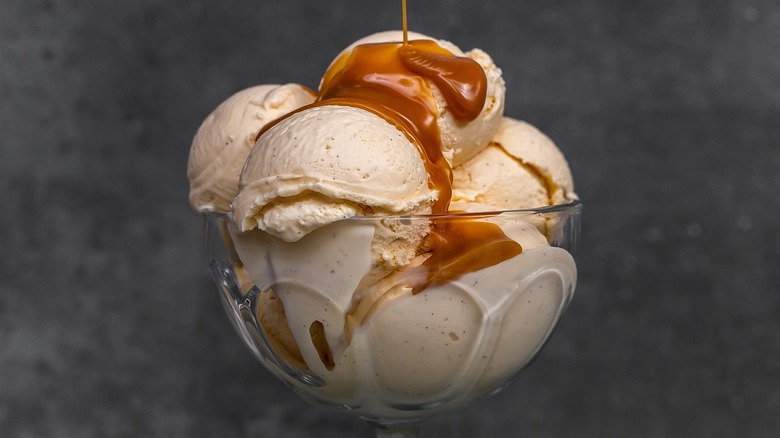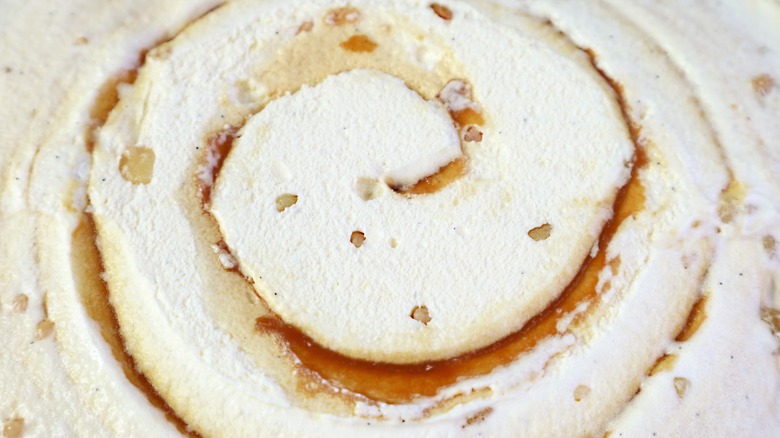How Salted Caramel And Ice Cream Became An Iconic Pairing
Whether you're drizzling salted caramel over vanilla ice cream or incorporating the two ingredients into a novel ice cream flavor, salted caramel and ice cream have become a beloved pairing. The path to this delicious duo is a brief yet interesting one, replete with resourceful French chocolatiers, food science, and modern techniques in ice-cream making.
Caramel is a simple blend of sugar, cream, and butter heated together to form the thick, burnt brown syrup we drizzle over ice cream. It's also a popular chocolate filling that chocolatiers have utilized since the 1800s. It was a French chocolatier named Henri Le Roux in 1977 who invented a salted caramel filling for his chocolates as a way to take advantage of the delicacies of his native Brittany, creating a new product that no other chocolate shop sold. Brittany's dairy industry was well-known for its salted butter, so Le Roux used salted butter and sugar to make his caramel. The results were an instant success, leading not only to more salted caramel products but also to salted chocolate bars, caramel corn, brownies, and even chocolate cookies.
Furthermore, advancements in technology and ice cream recipes have made it possible to turn salted caramel into an ice cream flavor. Until recently, ice cream has typically been served at below freezing temperatures, which hinder the detection of the salty flavor. However, now that ice cream is enjoyed at higher temperatures, we can taste the delicious duo in all of its glory.
Food science behind sweet and salty
While combining sweet and salty is a practice that certainly predates the 70s, with longstanding American favorites like peanut butter and jelly or cranberry sauce and turkey, Italian prosciutto-wrapped melons, and Middle Eastern saffron rice with raisins. However, we didn't have a clear understanding of why the pairing is so irresistible until modern food scientists began investigating the perception of flavors.
Sweet and salty are two of the five perceived tastes along with bitter, sour, and umami. While we've known about all but umami for the past century, we've only recently been able to understand them on a cellular level. Scientists discovered that the tastebuds covering our tongue each have specific receptors linked to the five tastes. While we thought that only individual taste buds could only perceive one specific taste, new studies reveal that certain taste buds can perceive both sweet and salty simultaneously. More specifically, the taste buds in question are sweet taste buds that only activate in the presence of salt.
Other food scientists take an evolutionary approach, arguing that sugar was a prized high-calorie source for ancient ancestors while salt is an essential electrolyte to keep our bodies functioning. However you look at it, the two flavors make a magically complementary combination in which each individual flavor is both enhanced and balanced.

